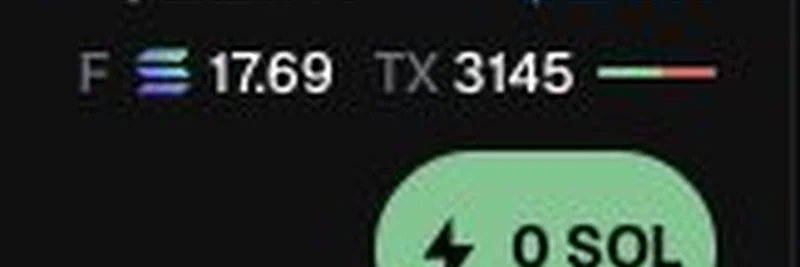Hey there, meme coin enthusiasts! If you’ve been diving into the wild world of cryptocurrency trading, you’ve probably heard about the risks of rug pulls—those sneaky scams where developers dump their tokens and leave investors high and dry. Today, we’re breaking down an awesome tip shared by The Doc on X that can help you spot organic volume in meme coins and steer clear of trouble. Let’s dive into how global fees can be your secret weapon!
Why Global Fees Matter in Meme Coin Trading
Meme coins are all the rage, but their volatility makes them a hotspot for manipulation. One common trick is using "bundled transactions" on the Solana blockchain, where scammers group multiple trades into one low-cost bundle to fake high volume. The Doc’s insight? Check the global fees paid on a token pair. These fees reflect the real cost of transactions and can tell you if the volume is genuine or artificially pumped.
In the tweet, The Doc highlights a pair with a volume of $223K and a market cap of $20K, with global fees of 17.69 SOL. That’s a solid sign of organic activity! But how do you know what’s “good” or “bad”? The rule of thumb is simple: for every $5K in market cap, you should see at least 0.5 SOL in fees. So, for a $20K market cap, aim for 1.5 to 2 SOL in fees. Anything lower, like 0.1 SOL, is a red flag—those coins might be bundled to death and ripe for a rug pull.
How Bundled Transactions Work (and Why They’re Tricky)
Bundled transactions are a feature on Solana that lets multiple trades happen in one block, often using tools like Jito bundles. This is great for efficiency but can be exploited. Scammers send 20 transactions in a single bundle for next to nothing, creating the illusion of high volume without real market interest. The catch? Each genuine trade typically incurs its own Jito tip and global fee. So, if fees are suspiciously low, it’s a sign the volume might not be legit.
The Doc explains that in their own copy-traded wallet, all trades hit the block together, tricking bundle checkers into flagging them as bundles. But by focusing on fees, you can cut through the noise and spot the real deals.
Practical Tips to Avoid Rug Pulls
Ready to put this into action? Here’s how you can use this strategy:
- Check the Fees: Use a blockchain explorer like Solscan or Jito Explorer to look at global fees for a token pair. Compare them to the market cap using The Doc’s 0.5 SOL per $5K rule.
- Watch the Graduated Tab: For coins in the “graduated” category, fees under 4 SOL might indicate heavy bundling—proceed with caution!
- Combine with Other Tools: Pair this tip with volume-to-market-cap ratios (a good range is 0.02 to 0.1, as seen with coins like Dogecoin) for a fuller picture.
This approach has been a game-changer for The Doc and others, helping them dodge insta-rugs on platforms like Pulse and MemeScope. Plus, the X community is buzzing about it—users like uncracked and zeroday have been using it for weeks and swear by its effectiveness.
Why This Matters for Meme Coin Investors
Meme coins thrive on hype, but that same hype can be manipulated. By focusing on global fees, you’re not just chasing trends—you’re making informed decisions. This tip is especially clutch for Solana-based tokens, where bundling is common. Whether you’re a newbie or a seasoned trader, adding this to your toolkit can save you from costly mistakes.
So, next time you’re eyeing a hot new meme coin, take a peek at those fees. Got questions or want to share your own tricks? Drop a comment below or join the conversation on meme-insider.com! Let’s keep learning and leveling up together in this crazy crypto world.



